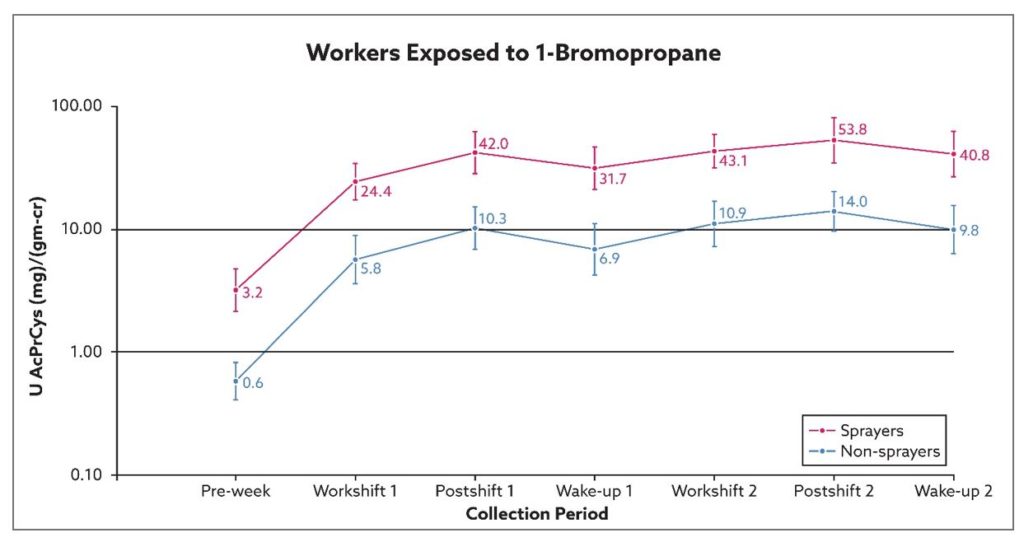By Jasmyne Brown, ND, MS
The Great Plains Laboratory (GPL) offers a non-metal toxin profile, called the GPL-TOX. This profile has garnered much attention for its extensive range of environmental toxins assessed. All the toxins measured are common in our environment. In elevated exposures, toxic burden can lead to detrimental symptoms that affect the human body in many ways.
In the assessment of this profile, we must realize that we, unfortunately, live in a toxic world. Whether we know it or not the world we live in is composed of various toxins that we are exposed to daily. The routes of exposure include inhalation, ingestion, and direct dermal contact. Because these toxins can be in the air, there are a myriad of unforeseen issues that cannot always be accounted for when assessing one’s exposures. The GPL-TOX screens for 172 different environmental pollutants from one urine sample. Advanced technology, LC/MS/MS is used to evaluate the urine sample. This is beneficial as lower levels of certain genetic, mitochondrial, and toxic chemical markers can be missed with conventional mass spectrometry. Tiglylglycine is another marker tested. It is the marker that measures mitochondrial dysfunction. With all the markers assessed this test pairs well with the Organic Acids Test (OAT) to assess metabolic function as it relates to the toxic burden.
Phthalates
On the GPL-TOX report, a commonly encountered toxin are phthalates. Phthalates are a group of chemicals known as plasticizers. They are used to make plastic more durable and dissolve chemicals. They are almost everywhere in our environment. Products such as cosmetics, bath and beauty products, oral pharmaceuticals, insect repellants, inks, varnishes, vinyl flooring, toys, eye shadow, perfume, upholstery, plastics, and food microwaved in plastic, etc. are all sources of phthalate exposure. Elevated exposure can lead to symptoms of fatigue and other neurologic complaints. Exposure has been seen and associated in children with autism spectrum disorders. This toxin is a cardiotoxin, hepatotoxin, and nephrotoxin in embryonic stem cells.
Regarding neurologic dysfunction, GPL saw a case involving a 36-year-old woman and phthalate exposure. Her level of exposure was 45 times the 95th percentile. Her symptomology was severe tremors. This toxin is also a well-studied endocrine disruptor. In utero, many effects of exposure have been correlated. In pregnancy, women exposed to higher concentrations of phthalates were reported to give birth to boys with smaller scrotums. It has also been reported that breastmilk exposure causes lower testosterone levels in males and incomplete testicular descent. Offspring were also shown to have childhood asthma, eczema, and rhinitis. In adult males with phthalate exposure, there was an inverse relation with toxin load and sperm morphology, decreased motility, and increase DNA damage. This led to infertility. Increased waist circumference, decreased thyroid hormone levels, and decreased pulmonary function were also report in males exposed.
1-Bromopropane
N-acetyl(propyl)cysteine (NAPR) marker is the urinary metabolite for 1-bromopropane exposure. This chemical exposure is one of the most difficult to pinpoint, especially if the person exposed does not work with this chemical. Most common symptoms of 1-bromopropane include neurologic changes like headaches, dysarthria, dizziness, loss of consciousness, confusion, difficulty walking, ataxia, loss of feeling in arms and legs, arthralgia (non-arthritis joint pain), as well as infertility. This chemical is also said to be reasonably anticipated as a human carcinogen. The most common sources of exposure include solvents used for the cleaning of metal, plastics, and electronics. Additionally, the dry-cleaning process uses this chemical, and it is used in both the application of asphalt, and in the furniture making process. The solvent is used as a foam glue in the cushions of furniture and as an adhesive spray. Workers that use this in their occupational duties had a significant elevation of the urinary metabolite after their shift. In golf club cleansing workers, symptoms of tingling pain, soreness in extremities, and paresthesia were reported. This was after 3-to-10-month daily exposure. The urine that was tested was collected 5 to 26 days following exposure, and they still tested in the 95th percentile. Another source of exposure is carpet and carpet cleaning. The adhesives used to keep carpeting secure and cleaners used to rid carpets of stains can have this chemical in the list of ingredients. These sources should be assessed when this marker is elevated.
In the US, 15 million pounds had been exported as of 2011. 1-Bromopropane was initially used to replace another toxic chemical known as methylene chloride. Since this discovery was made, the use of 1-bromopropane has grown rapidly. Other cases of neurologic disease have been associated with its exposure. The Great Plains Laboratory has seen two documented cases of ALS. One in a 40-year-old male and another in a 48-year-old woman. Both had levels above the 95th percentile. The woman mentioned also had elevated levels of vinyl chloride and ethylene oxide. One more case is described by a 10-year-old boy. He became obese with no diet change after exposure to glue guns high in 1-bromopropane. In the event of exposure, therapy would include the removal of the source, sauna, and glutathione/NAC supplementation.
Glyphosate

a week of work, through two work shifts, and post-shifts.
GPL offers a glyphosate test that you can consider when toxin testing. Glyphosate is an herbicide, but it is not available on our GPL-TOX profile. Glyphosate has gotten a lot of press since it was created in 1974. Its use is most common in agriculture but also by private users. In agriculture, crops that are treated most often with glyphosate are soybeans, corn, cotton, wheat, alfalfa, sorghum, sugar beets, canola, oranges, barley, and several other crops. States that have large agricultural activity have the highest amount of glyphosate usage. These states include those in the Midwest like Kansas, Missouri, Montana, Minnesota, South Dakota, Iowa, Texas, and Indiana. In other states, glyphosate is still used, just usually not at the same rates. There is also private use of this chemical. Most individuals would recognize it as Roundup, which is a common brand name of glyphosate.

Glyphosate is touted as an effective herbicide due to its mechanism of action. The shikimate pathway is the biochemical pathway in which this agent acts. In some organisms it acts to block amino acid synthesis by inhibiting the binding of phosphoenolpyruvate (PEP) to the enzyme 5-enolpyruvylshikimate-3-phosphate synthase (EPSPS). This is the rate-limiting step of the shikimate pathway in the production of aromatic amino acids: tryptophan, tyrosine, and phenylalanine. In other organisms it blocks the conversion of shikimate to chorismate, a common denominator in the production of many metabolites needed for microorganism life and virulence. Some of these metabolites include vitamins, enterobactin, and needed aromatic amino acids. By inhibiting chorismate’s formation or conversion to these metabolites, pests can be easily killed, and opens up research on the production of many antimicrobial agents.
The concern with glyphosate use is its effect on human health. Glyphosate has a known detrimental effect on renal function, chelates metals like copper and iron needed for human life, and interferes with CYP 450 enzymes. This herbicide also has the capability to kill probiotics like Lactobacillus, Bifidobacterium, Enterococcous, and Bacillus species. Our good gut bacteria also have the shikimate pathway and are affected by glyphosate. When they are damaged, there are less available amino acids and minerals for our bodily function. One mineral decreased by glyphosate is manganese. A lack of manganese is related to mitochondrial dysfunction and neurotoxicity seen in Parkinson’s, Alzheimer’s, and autism. It has also been linked to non-Hodgkin’s lymphoma and renal tumors.
GPL has come across various cases of toxic exposure to glyphosate. There have been values 18 times the 95th percentile in agricultural workers. In one case, a glyphosate worker died with levels 67 times the 95th percentile. This person also showed levels of succinic acid 12 times the upper limit. An 8-year-old male with a diagnosis of attention deficit had a level 10-times the upper limit. We also came across a 40-year-old male, who only ate organic food, with anxiety, depression, alcoholism, and having little success with SNRIs. He had a glyphosate level 9.2x the 95th percentile. So, what could be his source of exposure? He only ate organic food. In this case the man was an avid chewing tobacco user. It is known that 90% of tobacco products are full of pesticides, herbicides, and GMOs. Glyphosate is also used as a desiccant for tobacco products.
Article continues on next page:
Organophosphates, Reducing Exposure, Glutathione, NAC, List of Toxins and Sources






